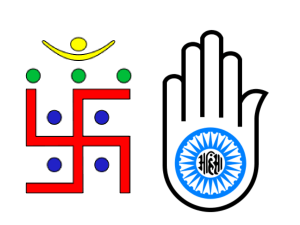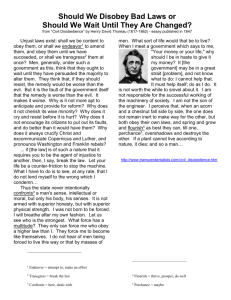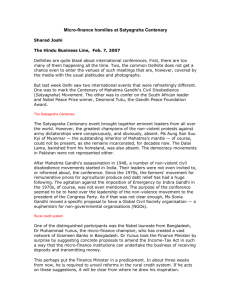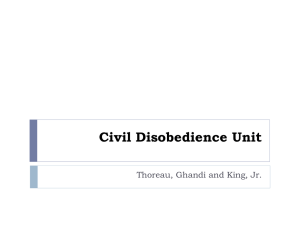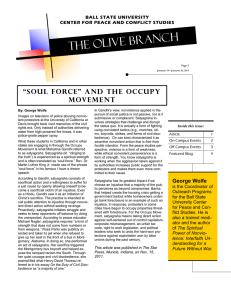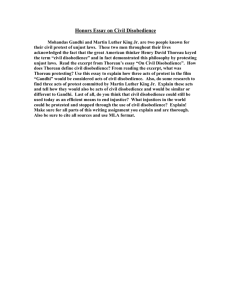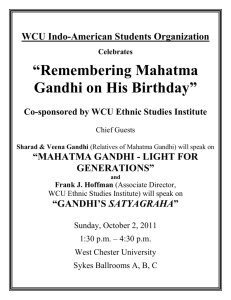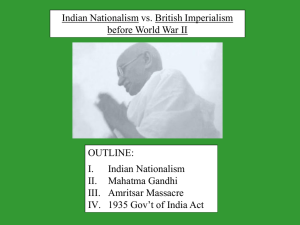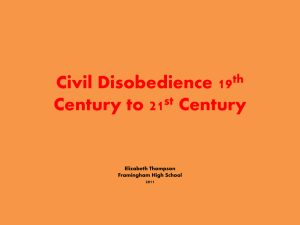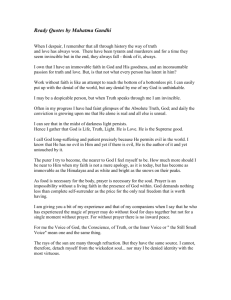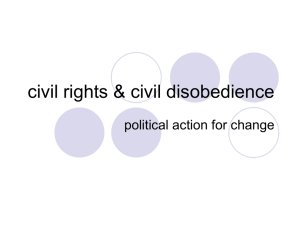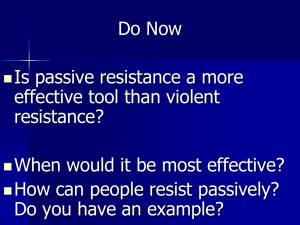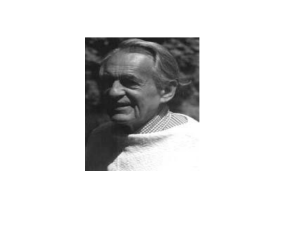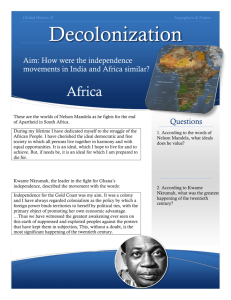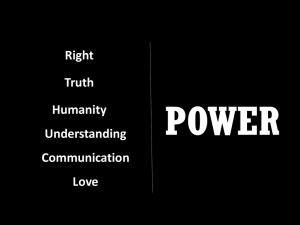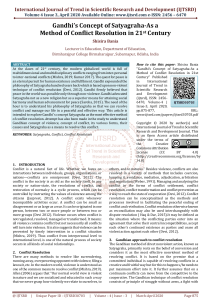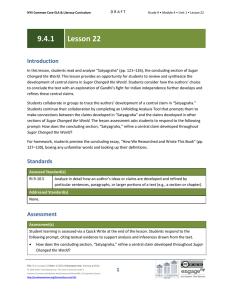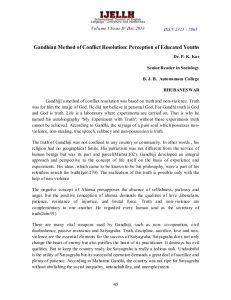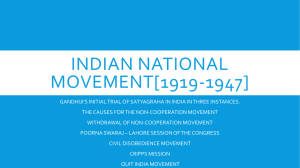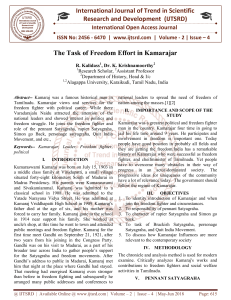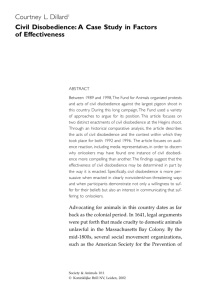Outline Lecture Thirteen: Anti-colonialism and Paths of Civil
advertisement
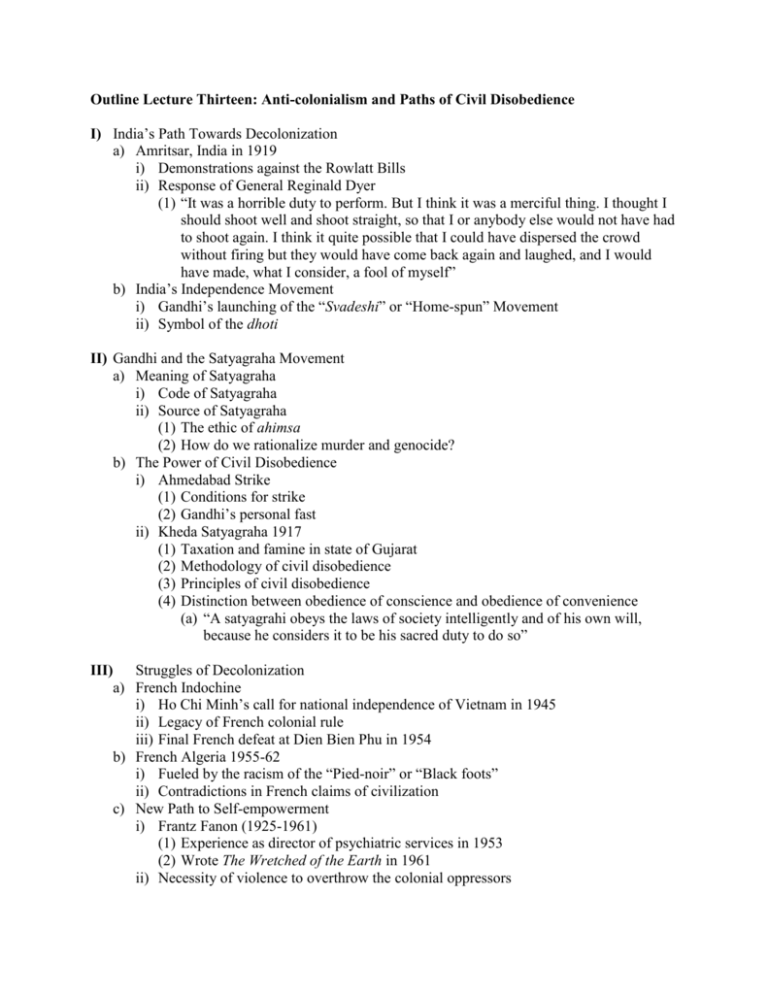
Outline Lecture Thirteen: Anti-colonialism and Paths of Civil Disobedience I) India’s Path Towards Decolonization a) Amritsar, India in 1919 i) Demonstrations against the Rowlatt Bills ii) Response of General Reginald Dyer (1) “It was a horrible duty to perform. But I think it was a merciful thing. I thought I should shoot well and shoot straight, so that I or anybody else would not have had to shoot again. I think it quite possible that I could have dispersed the crowd without firing but they would have come back again and laughed, and I would have made, what I consider, a fool of myself” b) India’s Independence Movement i) Gandhi’s launching of the “Svadeshi” or “Home-spun” Movement ii) Symbol of the dhoti II) Gandhi and the Satyagraha Movement a) Meaning of Satyagraha i) Code of Satyagraha ii) Source of Satyagraha (1) The ethic of ahimsa (2) How do we rationalize murder and genocide? b) The Power of Civil Disobedience i) Ahmedabad Strike (1) Conditions for strike (2) Gandhi’s personal fast ii) Kheda Satyagraha 1917 (1) Taxation and famine in state of Gujarat (2) Methodology of civil disobedience (3) Principles of civil disobedience (4) Distinction between obedience of conscience and obedience of convenience (a) “A satyagrahi obeys the laws of society intelligently and of his own will, because he considers it to be his sacred duty to do so” III) Struggles of Decolonization a) French Indochine i) Ho Chi Minh’s call for national independence of Vietnam in 1945 ii) Legacy of French colonial rule iii) Final French defeat at Dien Bien Phu in 1954 b) French Algeria 1955-62 i) Fueled by the racism of the “Pied-noir” or “Black foots” ii) Contradictions in French claims of civilization c) New Path to Self-empowerment i) Frantz Fanon (1925-1961) (1) Experience as director of psychiatric services in 1953 (2) Wrote The Wretched of the Earth in 1961 ii) Necessity of violence to overthrow the colonial oppressors (1) “Europe talks of the ideal ‘Man’ but murders men everywhere” iii) Mimicking the West is futile—at best “an obscene caricature” iv) Strong influence on Black militants like Malcolm X in the 1960’s (1) Would it be the “ballot or the bullet”? IV) Decolonization at Home: The American Civil Rights Movement a) Momentum of the Civil Rights Movement i) Brown vs. Board of Education of Topeka (1954) ii) 1955 Montgomery Bus Boycott—Rosa Parks iii) March on Washington 1963—Dr. King’s “I Have a Dream” speech iv) Civil Rights Act 1964 v) Voting Rights Act 1965 b) Southern Democrats—or “Dixiecrats” i) Meaning of Malcolm X’s “I don’t consider myself an American” c) The Argument of Deferral by White Moderates i) View of non-Black ministers (1) Protests are “unwise and untimely” (2) Law and order argument—why provoke violence? Why stir up trouble? ii) The Urgency of Action (1) King in “Letter from a Birmingham Jail” (a) “Patience” is merely a luxury of the privileged (b) The problem with the white moderates (2) “Shallow understanding from people of goodwill is more frustrating than absolute misunderstanding from people of ill will. Lukewarm acceptance is much more bewildering than outright rejection” d) The Methodology of Civil Protest—The Transformation from Within i) Four steps of non-violent protest (1) Collecting facts concerning injustice (2) Negotiation (3) Direct action (4) Self-purification
